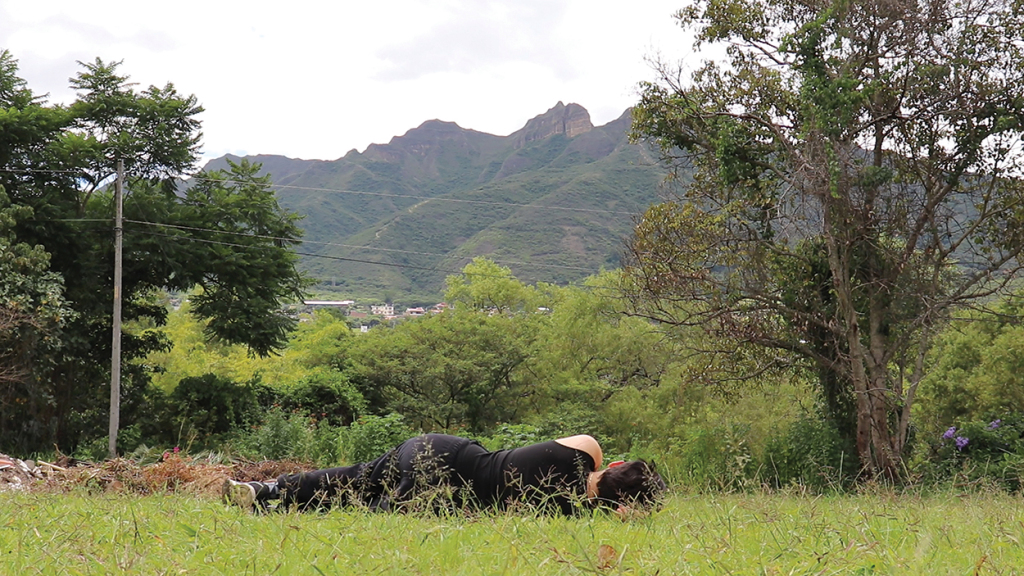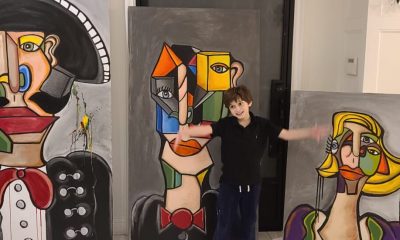ART WORLD NEWS
The Politics of Rest – ARTnews.com
Vilcabamba, Ecuador—also known as the sacred Valley of Longevity—is the subject of Alex Dolores Salerno’s eleven-minute video El Dios Acostado (The Sleeping God), 2020. In the opening shot, we see someone dressed in black lying on his side in front of Mandango Mountain, whose peaks and curves resemble his body’s own. In the 1970s, some North American gerontologists became fascinated with Vilcabamba, which is near the artist’s mother’s hometown, San Pedro da la Bendita. The researchers nicknamed Vilcabamba the Valley of Longevity for its supposedly high concentration of centenarians. Consequently, throngs of North Americans began purchasing cheap land in the town, pushing out its poor inhabitants in hopes of living long lives.
Related Articles
In a voiceover, one of three speakers—Salerno’s mother—reflects on the region’s beloved qualities: its healthy air; its hospitable inhabitants. The gerontologists believed that those conditions, plus the mineral-rich water, the largely plant-based diet fostered by fertile soil, and the frequent hikes that accompany life in a valley all contributed to lasting health. Though it may all be a major misunderstanding: many people in the town have identical names, making it difficult to distinguish birth and death certificates. And since the culture reveres the elderly, some believe that locals exaggerate their age. But still today, the town remains gentrified by American expatriates attracted to the peaceful pace of life.
At Work (Grounding Tactics), 2020, diamond plate rubber flooring, bedframe, books, stim toys, rocks, wood, candle, hourglass, tarot cards, heating pad, memory foam, and various objects, 77 by 56 by 14 inches.
Photo Mike DiFeo
Salerno—who was born in Washington, D.C., and lives in New York—makes work exploring how capitalism and colonialism affect rest and health. In a virtual studio visit, they described both to me as “disabling forces.” Their video tells one of the many stories from the long, dark, and ongoing history of “medical colonialism,” or the practice of subjecting people from the Global South to medical experimentation. Following the theorist Jasbir Puar, Salerno critiques the inequity faced by individuals who are treated as experimental subjects, who cannot afford health care or who live in polluted environments. The artist, who is disabled, rejects the idea that the chronically ill or disabled should be viewed as objects of pity.
Salerno recently received an MFA from Parsons. Currently, they are a resident in the New York–based Interdisciplinary Art and Theory Program, and have work on view in two online group shows: one hosted by the Shelley & Donald Rubin Foundation’s 8th Floor Museum, the other by the Ford Foundation. In a talk at the latter’s virtual opening, Salerno noted that they “set the video to a pace of rest.” Narration and image descriptions—the latter intended for blind and low-vision audiences—are read in both English and Spanish. Most filmmakers choose one language and add subtitles: Salerno’s decision required doubling the video’s duration. The speakers’ lines, written in both languages, are laid in large type over the center of the image, rather than relegated to the bottom of the screen.
Detail ofAt Work (Grounding Tactics), 2020, diamond plate rubber flooring, bedframe, books, stim toys, rocks, wood, candle, hourglass, tarot cards, heating pad, memory foam, and various objects, 77 by 56 by 14 inches.
Before making the video, Salerno worked primarily in sculpture, exploring the bed as a material. Their piece At Work (Grounding Tactics), 2020, is a platform bedframe topped not with a mattress but with diamond plate industrial rubber flooring. This material is typically found in spaces where workers stand on their feet all day: it prevents slipping and, being a softer surface, makes this strenuous demand slightly more tolerable. Underneath are cubbies with heating pads, tarot cards, candles, and stim toys: some people, especially those with ADHD or autism, fidget with the latter to stay focused or calm. The cubbies also house numerous books, like Leah Lakshmi Piepzna-Samarasinha’s Care Work: Dreaming Disability Justice and Jonathan Crary’s 24/7: Late Capitalism and the Ends of Sleep. In remaking the bed in a material that evokes labor done while standing, Salerno evokes the toll taken on the bodies of manual laborers, many of whom risk their health for minimal wages, or have long commutes that cut into much-needed rest time. The work seeks, in Salerno’s words, to frame sleep as “a need and a right,” rather than “an aid to production.”











